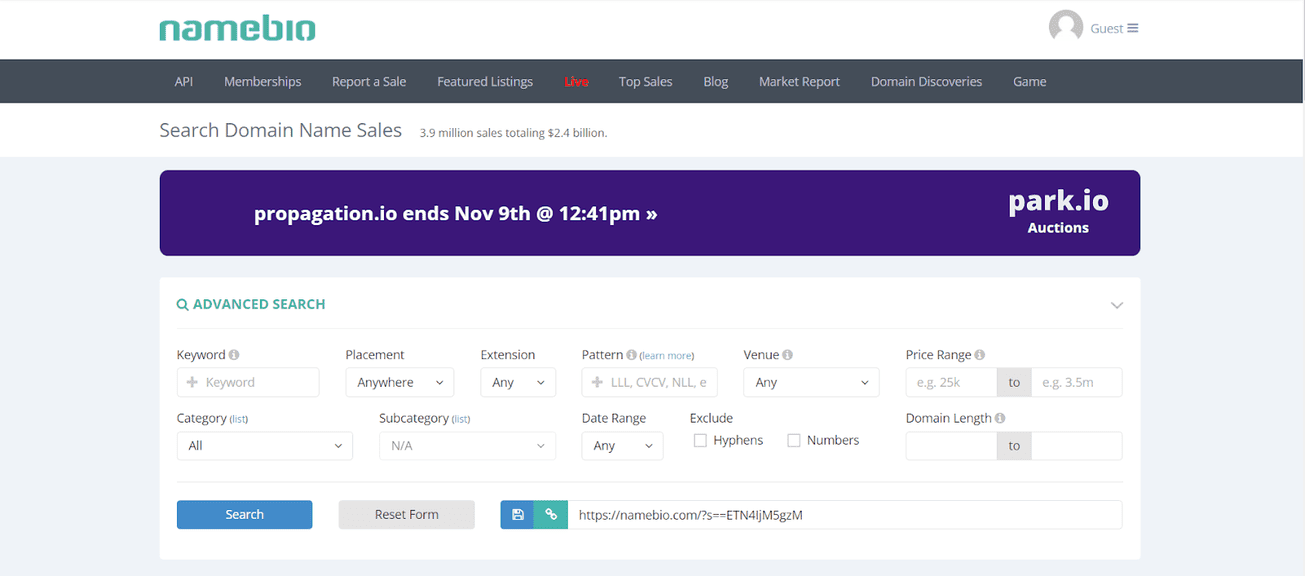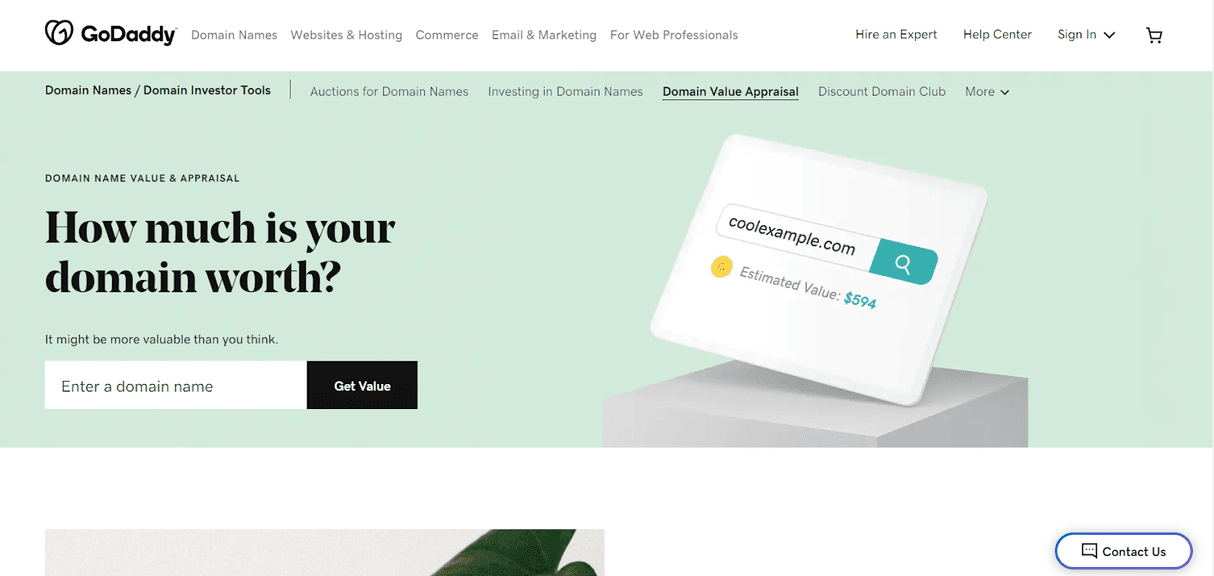If you’re looking to sell a domain name, this guide will give you a complete rundown on how to do it.
From finding the right buyer, to getting the best price, we’ll cover everything you need to know.
Frequently Asked Questions
Before we do, let’s take a quick look at the basics.
How Do Domain Name Marketplaces Work?
Domain name marketplaces are platforms that help users buy and sell domain names.
These marketplaces generally have a database of active domains that are listed for sale.
Users can log into these marketplaces to search for a domain name using a number of different parameters.
Upon finding a domain that matches the buyer’s preferences, the buyer can make an offer on the domain.
The seller will then have the option to accept or decline the offer
Why Should I Sell My Domain Name?
There are a few different reasons why you might consider selling your domain name.
These include you aren’t using your domain name anymore, you are redesigning your website with a new host and domain name, you have a domain name that is worth more than you paid for it, and you want to make a profit, or you want to start making money by buying and selling valuable domain names.
Steps to Selling a Domain Name [Step-by-Step]
To help make sure you get the most money for your domain name, we’ve laid out the steps you should follow.
1. Determine Your Domain Name’s Value
To help you determine the value of your domain name, you’ll need to do a little research.
There are a few different ways to calculate a domain’s worth, and each method has its own strengths and weaknesses.
Research Comparable Sales
To help you get a better idea of how much your domain name is worth, you’ll want to research comparable sales.
This will allow you to compare the prices paid for similar domain names and see what kind of return you could make on your own domain name.
One excellent option is to use a site like namebio.com.
It lists historical sales data along with current prices and auctions.
You can adjust advanced search parameters to get a more accurate estimate of the estimated value of your domain name.

Use Domain Appraisal Tools
Another quick and easy suggestion is to use domain appraisal tools.
Sites like GoDaddy’s GoValue use the power of computer algorithms to estimate the worth of domain names for free.

Although these tools are helpful, keep in mind that because they’re reliant on algorithms, they might not be as accurate as a real appraisal from a domain name expert or research based on historical data.
Get an Expert Opinion
If you think your domain name is valuable, you can confirm your estimate by going through a domain name broker.
Domain name brokers will provide an expert opinion that can help you determine the true value of your domain, and make sure you set your sale price accordingly.
2. Set Your Domain Name’s Price
Now that you’ve put in the work to determine how much your domain name is worth, you can set your sale price.
You’ll need to decide if you want to go the buy-it-now route, or opt for a longer-term sale through auctions and bidding wars.
If your domain name isn’t particularly valuable, it probably makes more sense to go with a buy-it-now strategy.
You might have to price it a little lower, but you’ll save a lot of time and effort.
If you have a high-value domain, though, you might want to consider going the auction route and letting buyers make offers.
You can decide to manage this yourself, go through a broker, or use an automated auction service.
3. Prepare Your Domain Listing
To sell a domain name, you’ll need to prepare a list of your domain’s features and benefits.
Now it’s time to create a listing.
This can be done through a domain name broker, an auction site, or even your own website.
In fact, one of the first things you should do is to create a landing page on your own website that clearly lists your domain name for sale.
This is because when someone has an idea for a website, one of the first things they do is type it into Google and see if it’s taken or not.
So if it isn’t clear from your site’s landing page that your domain name is for sale, you could miss out on a potential sale.
4. List Your Domain Name on Marketplaces
Even if you have your own for-sale page setup, you’ll probably still want to list your domain on a marketplace as well.
You’ll need to include all the information required by the platform you’re using, including the price, expiration date, and contact information.
Large marketplaces have a high repeat buyer rate, and they partner with other websites and registrars to put your domain name in front of potential buyers through a distribution network.
Let’s take a look at some of the most popular marketplaces:
Sedo

Sedo is one of the most popular domain name marketplaces, and for good reason.
They offer a wide variety of features, making them a good choice for both buyers and sellers.
For example, they have a built-in escrow service to protect both parties in a transaction, and they offer domain name financing, so buyers can spread the cost of a purchase over time.
They also have a large distribution network that includes partnerships with other registrars and websites.
It’s completely free to list your domain name for sale, but they do charge a variable commission on sales made through their network.
Afternic
Afternic, a derivative of GoDaddy, is a great choice for domain name sellers who want to distribute their domain name through a network of other websites and registrars.
According to their site, they’ve listed over 22 million domain names for sale on their network.
5. Sell Your Domain Name at Auction
Auction sites are a great way to get the most exposure for your domain name, and they can be a good option if you have a high-value domain.
With a domain name auction, you can set a starting price and let buyers make offers.
You can also set a reserve price, which is the minimum price you’re willing to accept.
If the domain doesn’t reach the reserve price, it won’t be sold.
Here’s a quick overview of two popular auction sites:
GoDaddy Auctions
GoDaddy Auctions boasts a user-friendly interface and the largest inventory of domains for sale.
They also offer enhanced data tools and security, so you can feel confident in your transactions.
Namejet
Namejet specializes in aftermarket and expired domain names and is a great option for both buying and selling.
6. Protect Your Payment Through Escrow
If you’re not selling through a reputable marketplace, brokerage, or auction site, then you’ll need to protect your payment with escrow.
This helps protect against scams and mitigates risk of fraud.
7. Transfer the Domain Name
The last step to selling your domain name is completing the transfer.
Again, if you’re using one of the sites we’ve listed, this part of the process is typically handled for you.
But if you completed an independent sale, then you’ll have to do it yourself.
Here are a few tips to make the process go smoothly:
- Make sure you have the original purchase agreement and other documentation from when you purchased the domain name. This will help prove your ownership.
- Contact the domain name registrar and ask them to transfer the ownership of the domain name to the buyer.
Wrapping Up
So, there you have it—everything you need to know about how to sell a domain name.
With a little effort, you can get a good price for your domain and start earning some extra cash.
Just remember to do your research, set a fair price, and protect yourself with escrow.
Let us know how the process goes for you in the comments!






